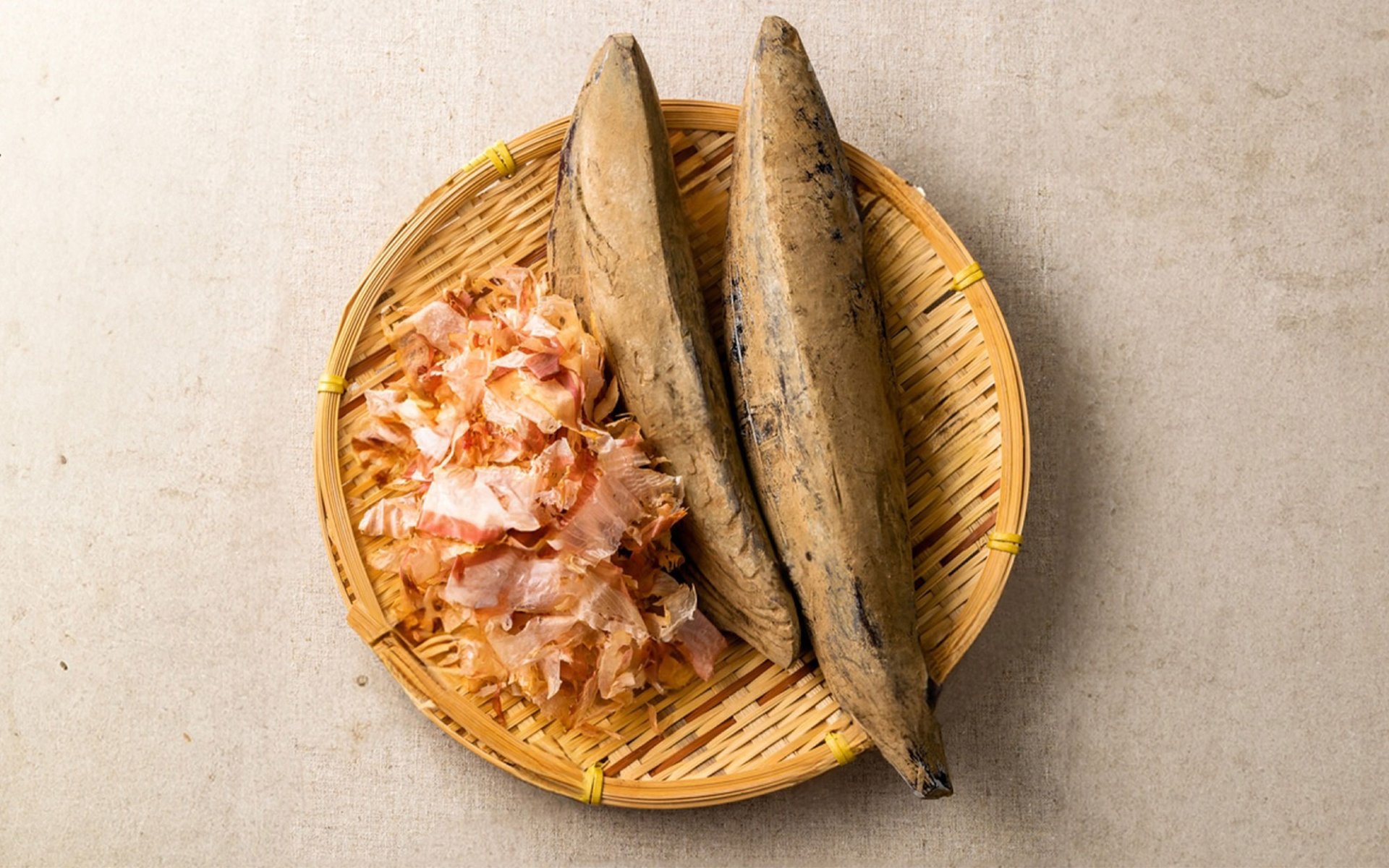Katsuobushi

Katsuobushi, also known as dried bonito flakes, is a crucial ingredient that has been used to season Japanese food for centuries. It can be adapted for various types of dishes. Japanese people commonly use it as a topping to enhance flavor and aroma, as well as to add richness to various soups. Today, Rimping Supermarket invites you to discover the secret ingredient that creates deliciousness in many Japanese dishes.
Origins and Evolution: From Preservation to Art (Edo Period)
The origin of Katsuobushi dates back to the Edo period in Japan (16031868 AD). It is believed that the technique for making Katsuobushi was developed in the coastal areas of Japan, where fishermen processed abundant skipjack tuna by drying it to prevent spoilage.
Over time, in the late 17th century, a fisherman named Kadoya Jintaro discovered the technique of smoking fish. This technique is credited as a fundamental development in modern Katsuobushi production. Fishermen would smoke the fish and then sun-dry it. This technique not only helped preserve the fish more effectively but also enhanced its flavor through the smoking process.
The Art of Katsuobushi Making: Honkarebushi and Its Specialty
The process of making Katsuobushi is a meticulous craft. Fishermen take freshly caught fish, fillet them into convenient pieces, and then smoke them with oak or cherry wood. Once the fish is thoroughly dried, it is repeatedly fermented, sun-dried, and aged over several months to develop a rich, umami flavor.
Later, in the 18th century, Katsuobushi production advanced further with the Tebiyama-style (手火山式) drying method. This process requires extensive skill and expertise to produce the highest grade of Katsuobushi, known as Honkarebushi. This technique involves smoking and drying the fish 4-5 times and coating it with the mold Aspergillus glaucus (koji mold used for sake) during sun-drying. This specific drying method enhances the fish's aroma and unique flavor, resulting in a clearer and more mellow, rounded taste when used to make soup.
From Protein Source to Japanese Culinary Foundation and World Heritage
Historically, Katsuobushi served as a vital protein source during long sea voyages and harsh winters due to its extended shelf life. However, with advancements in culinary techniques, Katsuobushi evolved beyond its original role, becoming a primary seasoning and a fundamental ingredient in countless Japanese dishes.
One of the most prominent uses of Katsuobushi is in making Dashi, the fundamental stock for countless Japanese dishes. When sprinkled into hot water, Katsuobushi releases its aromatic essence along with a rich, savory flavor. Dashi can be used to prepare a wide variety of dishes, from ramen and miso soup to many others.
In recent years, Katsuobushi has gained popularity beyond Japan, driven by the increasing global interest in Japanese cuisine. Chefs and food enthusiasts worldwide embrace Katsuobushi for its unique flavor profile and versatile applications in cooking.
Despite its modern appeal, Katsuobushi production remains deeply rooted in tradition. Many producers continue to adhere to ancient methods passed down through generations, from meticulous fish selection to the artistry of smoking and fermentation.
Katsuobushi production has been recognized by UNESCO, which included Washoku, the traditional Japanese culinary culture, in its list of Intangible Cultural Heritage in 2013. This designation not only highlights Katsuobushi's significance in Japanese cuisine but also emphasizes its role as a cultural ambassador for Japan on the global stage.


